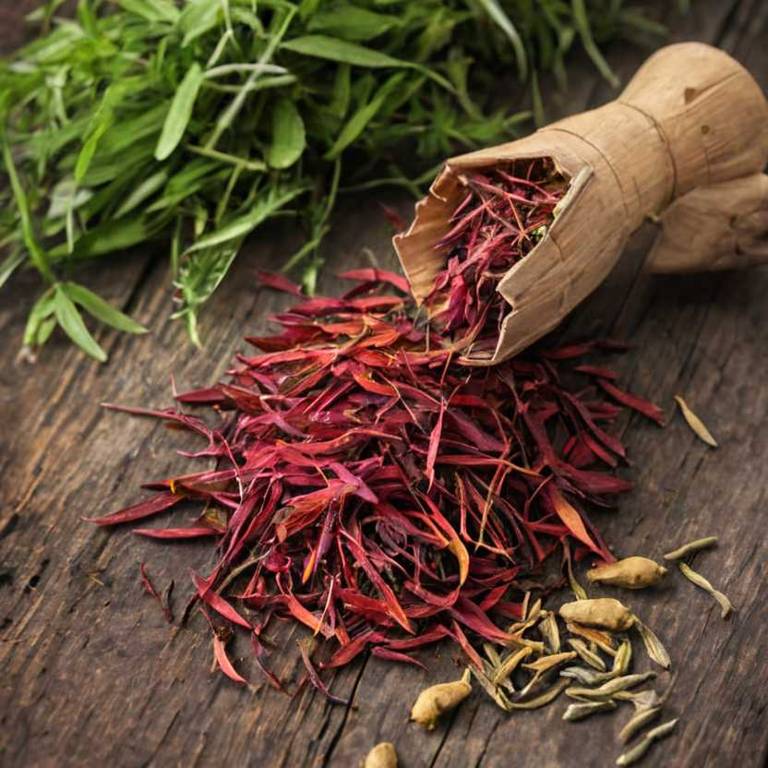By Leen Randell
Updated: Jul 21, 2024
10 Medicinal Constituents Of Butea Superba (Red Kwao Krua)

Butea superba has active constituents such as flavonoids, saponins, and terpenoids.
These constituents are attributed to its medicinal properties, including anti-inflammatory, antioxidant, and antidiabetic activities. The flavonoids can improve cardiovascular health by reducing cholesterol levels and preventing blood clots, while the saponins can enhance immune function and protect against diseases such as cancer and diabetes.
These properties can improve people's lives by reducing the risk of chronic diseases.
This article explains in details the 10 best active constituents of Butea superba.
1. Flavonoids
Butea superba flavonoids is a group of compounds found in this plant species.
These flavonoids have been shown to possess antioxidant and anti-inflammatory properties, making them potentially beneficial for various health issues such as cardiovascular disease and cancer.
The flavonoids present in Butea superba include quercetin, kaempferol, and myricetin, which have been studied for their ability to protect against cell damage and improve overall health.
2. Quercetin
Butea superba quercetin is a natural flavonoid compound extracted from the roots of the Butea superba plant.
It has been traditionally used in Thai medicine for centuries to treat various health conditions, including cardiovascular and respiratory disorders.
Quercetin has potent antioxidant properties, which can help protect against cell damage and inflammation, making it a popular supplement for promoting overall well-being and supporting immune function.
3. Kaempferol
Butea superba kaempferol is a flavonoid compound found in the flowers and leaves of the Butea superba plant.
It has been traditionally used in Thai medicine for centuries to treat various health conditions such as impotence, diabetes, and cardiovascular disease.
Kaempferol has been shown to have antioxidant, anti-inflammatory, and vasodilatory properties, making it a potential therapeutic agent for the treatment of various diseases.
4. Catechins
Butea superba catechins is a type of bioactive compound found in the roots of this plant.
It has been traditionally used in Thai medicine to treat various health issues, including inflammation and cardiovascular disease.
Catechins are a class of antioxidants that have been shown to exhibit anti-inflammatory, antimicrobial, and antiviral properties, making them valuable for their potential therapeutic benefits.
5. Ellagic acid
Butea superba ellagic acid is a polyphenolic compound extracted from the root of this plant.
It has been found to have numerous health benefits, including antioxidant and anti-inflammatory properties. Ellagic acid has been shown to inhibit the growth of cancer cells, reduce oxidative stress, and improve cardiovascular health.
Its potential therapeutic applications make it a promising area of research for natural medicine and disease prevention.
6. Gallic acid
Butea superba gallic acid is a bioactive compound extracted from the roots of Butea superba, a plant native to Thailand.
This potent antioxidant has been shown to possess anti-inflammatory and antimicrobial properties, making it a potential natural remedy for various health conditions, including wound healing, cardiovascular disease, and cancer prevention.
Its unique composition and bioavailability have garnered significant interest in the scientific community, leading to further research on its therapeutic applications.
7. Rutin
Butea superba rutin is a type of flavonoid compound extracted from the root of the Butea superba plant.
It has been traditionally used in Thai medicine for centuries to treat various health issues, including cardiovascular disease and inflammation.
Rutin has been shown to have potent antioxidant and anti-inflammatory properties, making it a potential natural remedy for chronic diseases such as diabetes, cancer, and Alzheimer's disease.
8. Quinic acid
Butea superba, also known as Red Kwao Krua, quinic acid is a type of bioactive compound extracted from the root of the plant.
This compound has been found to possess potent anti-inflammatory and antioxidant properties, making it a potential treatment for various health conditions, including arthritis, diabetes, and cardiovascular diseases.
Additionally, quinic acid has also been shown to have antibacterial and antifungal activities, further highlighting its therapeutic benefits.
9. Tannins
Butea superba, also known as Red Kwao Krua, tannins is a type of compound found in this traditional Thai plant.
These tannins are responsible for the antioxidant and anti-inflammatory properties of Butea superba, which have been linked to various health benefits, including improving cardiovascular health and reducing the risk of chronic diseases such as cancer and Alzheimer's.
The high concentration of tannins in Red Kwao Krua extract makes it a popular ingredient in supplements and traditional medicine.
10. Catechinic acids
Butea superba, also known as Red Kwao Krua, catechinic acids is a group of bioactive compounds isolated from the roots of this plant.
These acids are rich in polyphenolic structures and exhibit various pharmacological activities, including antioxidant, anti-inflammatory, and antimicrobial properties.
They have been shown to inhibit the growth of certain cancer cells and may play a role in the prevention of chronic diseases such as heart disease and diabetes.